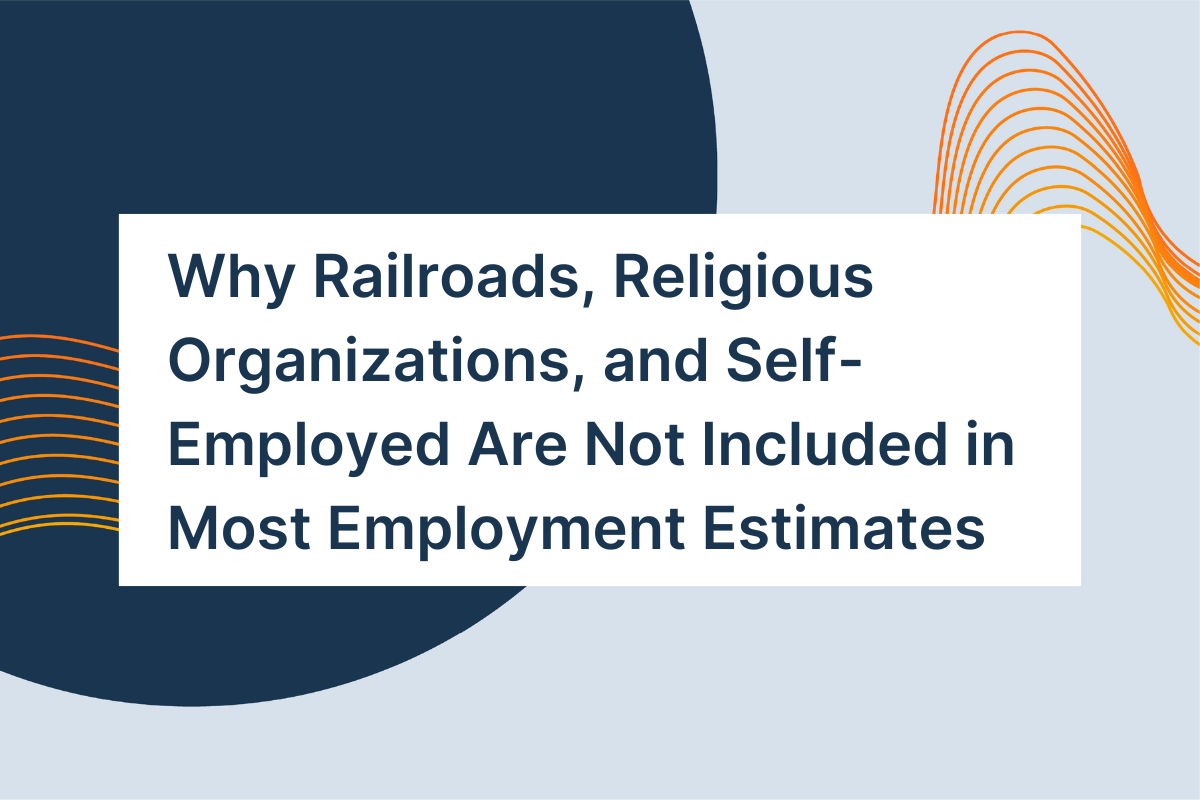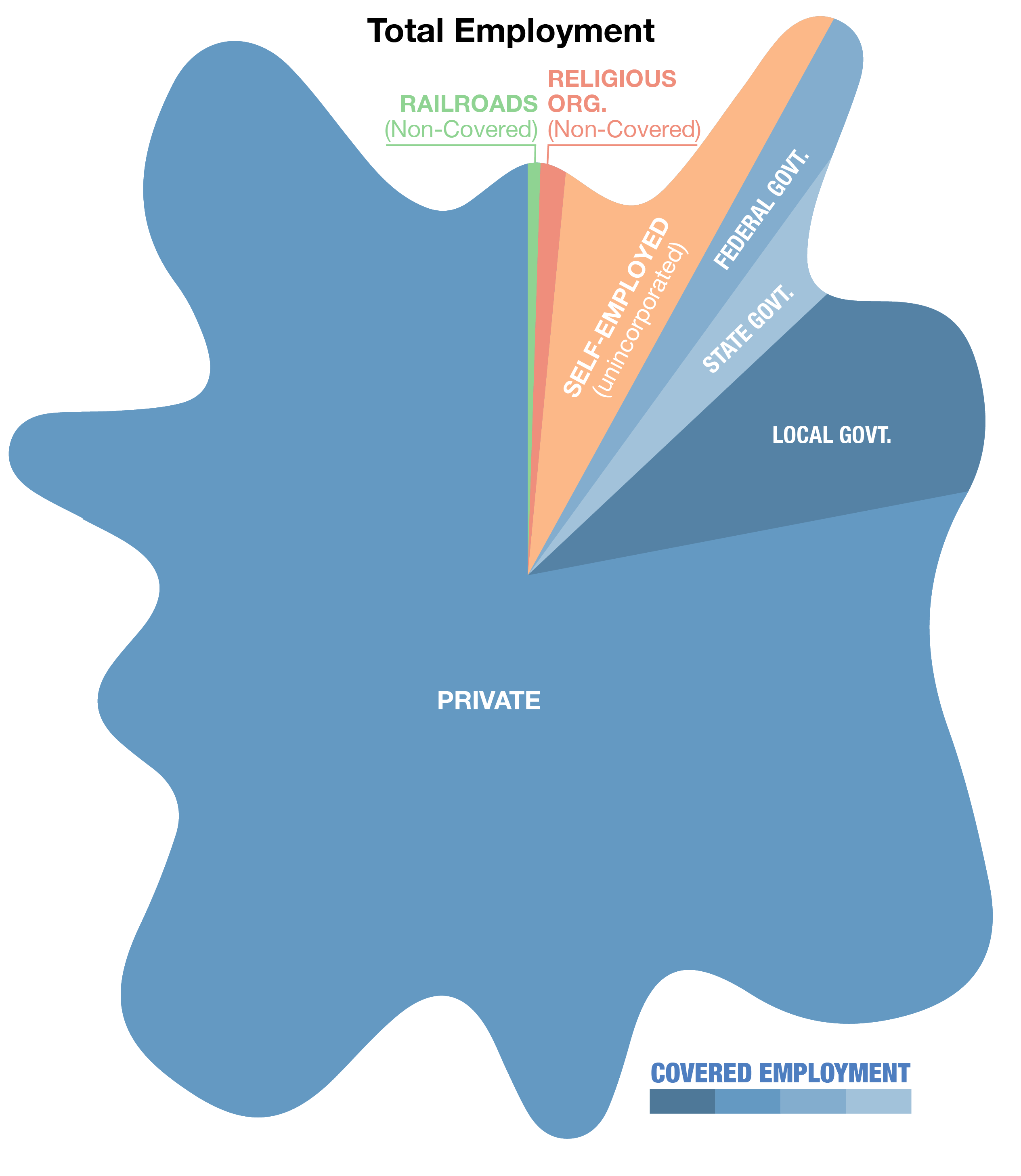Why Railroads, Religious Organizations, and Self-Employed Are Not Included in Most Employment Estimates

By Chris Chmura |
The evolution of employment data collection in the United States has led to a few exceptions that can have an impact on your view of employment in a region.
To understand these missing data, a brief overview of a few employment data sources is helpful.
The Quarterly Census of Employment and Wages (QCEW), conducted by the Bureau of Labor Statistics with the cooperation of State Employment Security Agencies, collects employment data from nearly every employer in the nation—specifically, any employers that report to U.S. Unemployment Insurance programs. The program began in the 1930s as the ES-202 program, only adopting the QCEW name relatively recently in 2003. Due to the QCEW’s nearly comprehensive sample (about 97% of all employment), the quarterly data serve as a benchmark for other employment estimates such as the Current Employment Statistics (used in the monthly job reports often covered in the media).
This near census of employment information collected in the QCEW program is called “covered workers” and is subdivided into private, local government, state government, and federal government jobs. However, some groups are not covered:
- Members of the armed forces
- The self-employed
- Proprietors
- Domestic workers
- Unpaid family workers
- Railroad workers
- Some religious organizations
Understandably, some of these non-covered workers would be difficult to track. But why are railroad workers and religious organizations not covered? Why not proprietors? It has to do with the fact that QCEW data are collected with the cooperation of state unemployment insurance agencies.
In the 1920s, the railroad industry’s private pension plans already faced a number of problems, which were then compounded by the Great Depression in the 1930s. There was a push for establishing a separate federal retirement program for railroad workers around the same time as the new Social Security system was being created. The initiatives continued under separate unemployment insurance laws, and today the Railroad Retirement Board administers the separate unemployment insurance for railroad workers. Due to this separate program, railroad workers are not “covered” in the QCEW.
Religious organizations have a more recent reason for not being covered. Under a 1981 Supreme Court ruling, schools affiliated with a religion are not required to be covered by Unemployment Insurance programs. Due to differences between state UI laws, certain types of nonprofit employers, including religious organizations, are given a choice of coverage or noncoverage. While there is an industry (NAICS) code for religious organizations, some employment is covered in NAICS 8131 but most is non-covered.
Finally, proprietors are generally not included in the QCEW data because, as sole proprietors or partners in a firm, they are not required to pay unemployment insurance for themselves, no matter how large the firm is.
Recognizing the need for a more complete view of local labor force, Chmura includes estimates of employment for railroads, religious organizations, and the self-employed to its JobsEQ® technology platform. “Total employment” is the default employment type in JobsEQ, representing the sum of these three data sets and covered employment.
We are excited about these break-outs within JobsEQ and the insights they provide our users about their regional economies. If you are interested in seeing a demonstration, please contact us.
Research support provided by Patrick Clapp.
Subscribe to the Weekly Economic Update
Subscribe to the Weekly Economic Update and get news delivered straight to your inbox.
